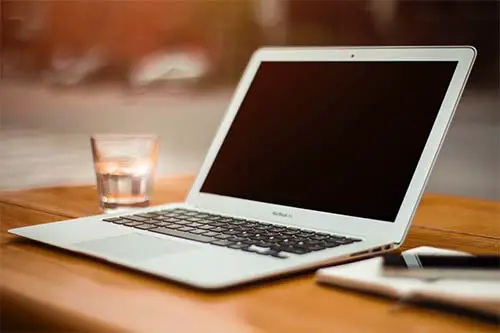How to eject a USB drive from a MacBook? USBs offer a great way to store precious memories and larger files that may slow your MacBook down. Like everything with Apple, you will notice it is a smooth, sleek process. On top of that, there is more than one way to eject a USB drive correctly.
Regardless of those people who tell you to just pull your USB drive out, this isn’t recommended. Let’s look at why you should take a moment to discover how to eject a USB from Mac properly.
Table of Contents
- Do I really need to eject a USB drive before removing it?
- How to eject a USB drive from a MacBook
- How do I know if my USB has been ejected correctly?
- Wrap Up
Do I really need to eject a USB drive before removing it?
The simple answer is yes! And we will give you three very good reasons for doing so. You should never force eject an external hard drive on Mac.
You may corrupt your data
When you insert a USB there is a massive amount of data transfer. The same can be said for any action you carry out while it is inserted.
When you eject a USB first, you are stopping that data transfer and therefore data won’t be corrupted when you take it out.
You can damage the logical file system
A USB has cells that store internal drive data and not ejecting it can destroy these cells. If this happens, you might not be able to access the data that you have saved to your USB.
You can lose data
It’s a bit of a hassle having to try and restore USBs that have been removed without ejecting them. In some cases, you might not even be able to recover the data and you will have lost the file for good.
This might not be the end of the world for music and movies, but it’s pretty heartbreaking for photos and your home videos.
How to eject a USB drive from a MacBook
It’s a personal preference as to which method you choose. Neither is faster or does a better job so really it’s about which is easier for you.
Right-click
When you right-click on your USB drive from the desktop, a window will open in the same way it does with any other file. The second option will safely eject your USB.

Quick tip, you can also use this window to rename your USB which is very handy if you have various different ones.
From Finder
Click anywhere on your desktop so that Finder appears in the top left-hand corner. Choose “File” and “New Finder Window”.

Under “Locations”, you will see all of the USB drives or hard drives that are connected to your MacBook. Choose the name of the one you want to eject and click on the eject button to the right of the name.

Drag and drop
For those who love to drag and drop, you can select your USB on the desktop and drag it straight into the bin on the right-hand side of your dock.

Use the shortcut
Make sure your USB is highlighted by clicking on it once. You can either go to “File” and click on Eject “your USB name” or you can press Command + E together.

How do I know if my USB has been ejected correctly?
If your USB has a light indicator it will flash when you carry out any action. This could be adding or removing files, or inserting and ejecting.
Using either of the four methods above will cause the light to flash and when it stops, you know it is safe to remove it.
You will also notice that your USB icon will have disappeared from the desktop and/or the sidebar in your Finder window.
Wrap Up
Learning how to safely remove USB from Mac is incredibly useful and it is the same process for all other hard disks or storage devices you want to connect to your MacBook.
External hard drives and USBs are a great way to store important documents, images, and videos that you don’t want to take up storage space on your Mac.
It only takes seconds to eject a USB drive correctly and safely. Trust us, it will take a lot longer to try and recover data lost by just pulling your USB drive out.
Check out some of our other awesome articles:
- Adding a folder to Favorites on a MacBook
- Where can I find the pictures folder on a Mac?
- Adding favorites on a MacBook
- How can I clean Recents in Finder
- Creating folders on a Mac
- How to automatically sync photos from iPhone do Mac
- How to save YouTube videos to iPhone
- Hiding photos on iPhone
- How to print a PDF on iPhone
- How to send pictures from iPhone to Google Drive

